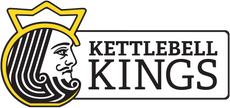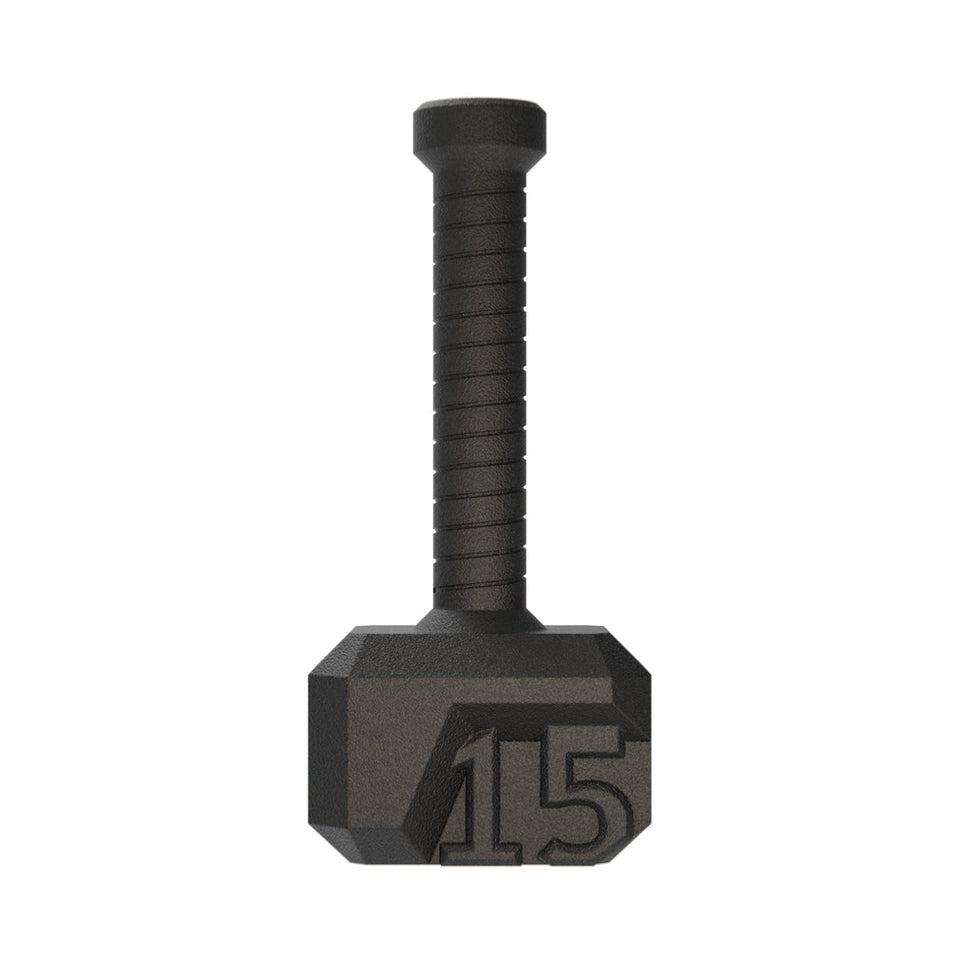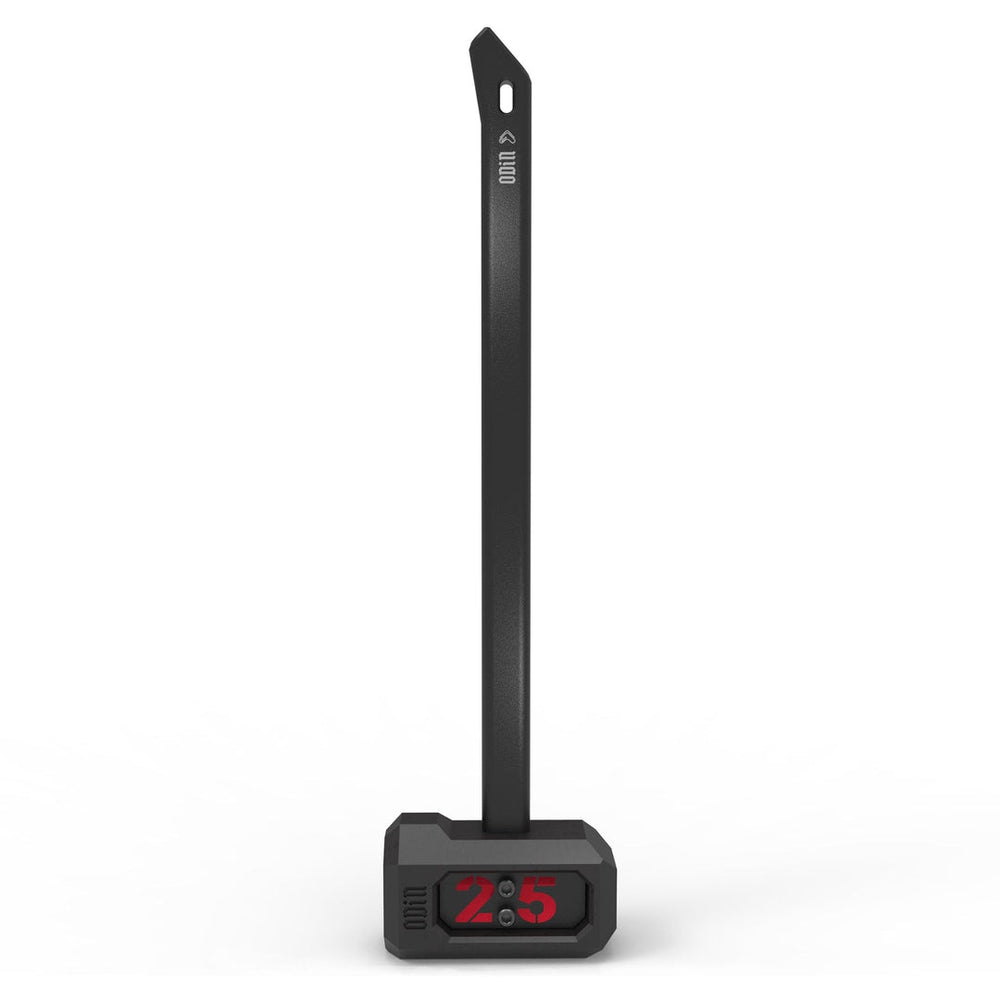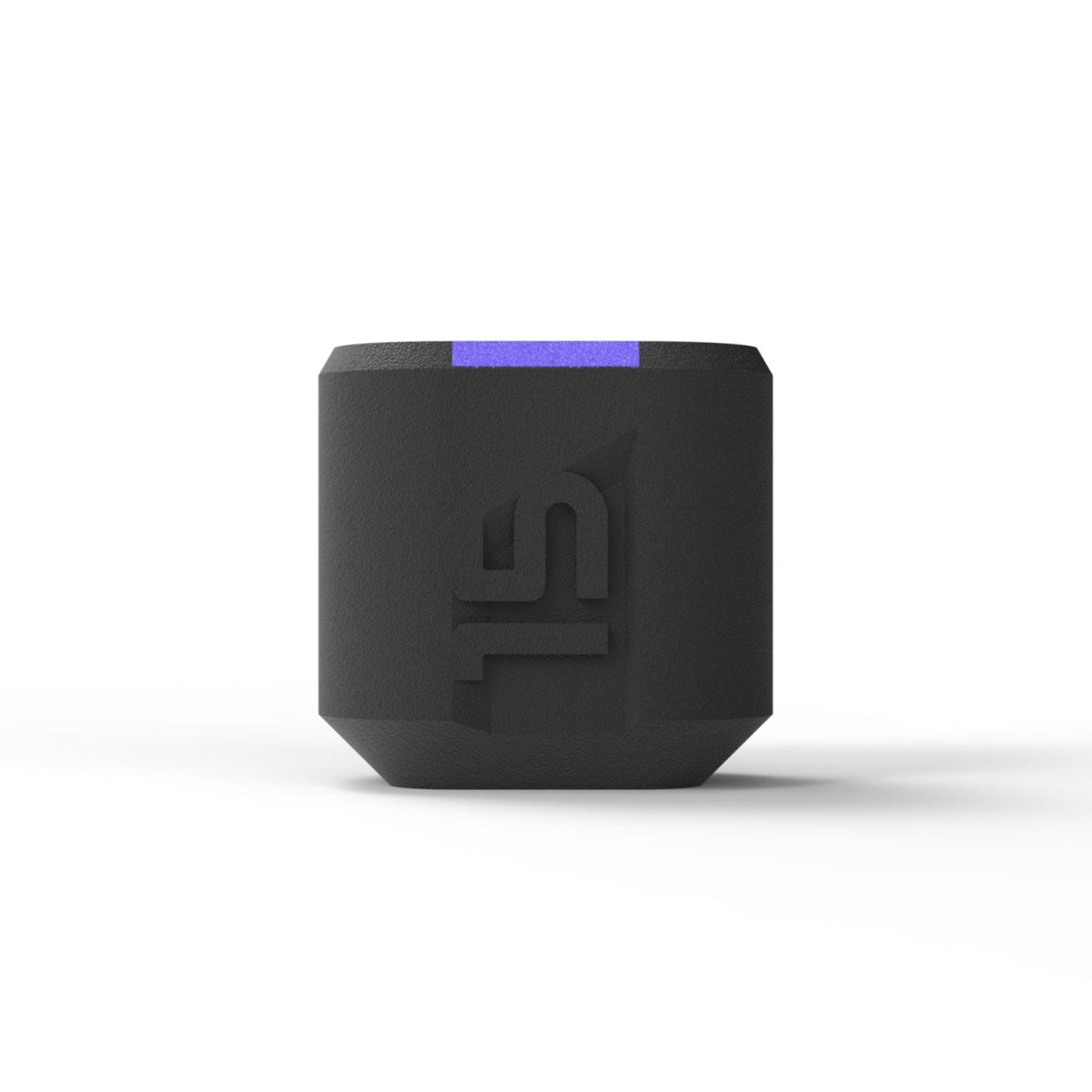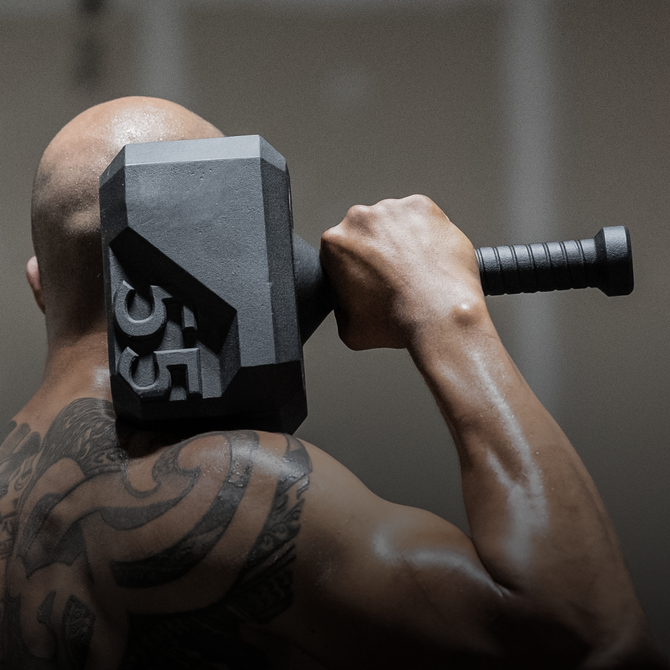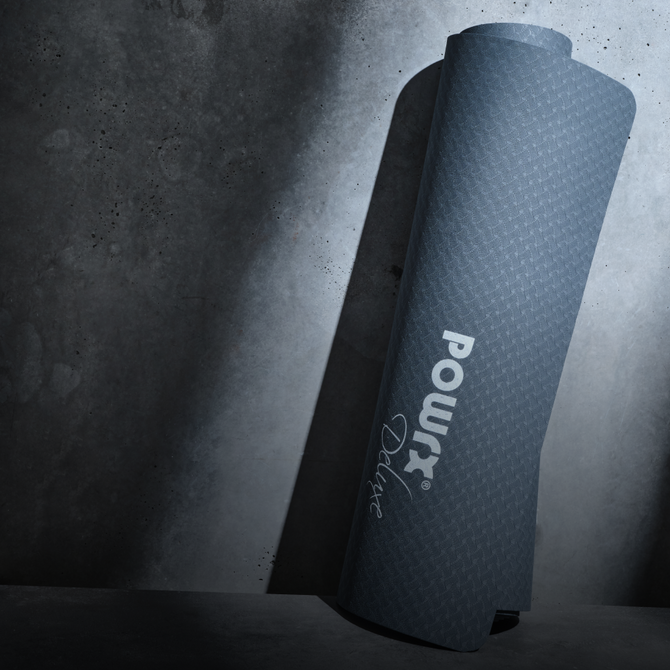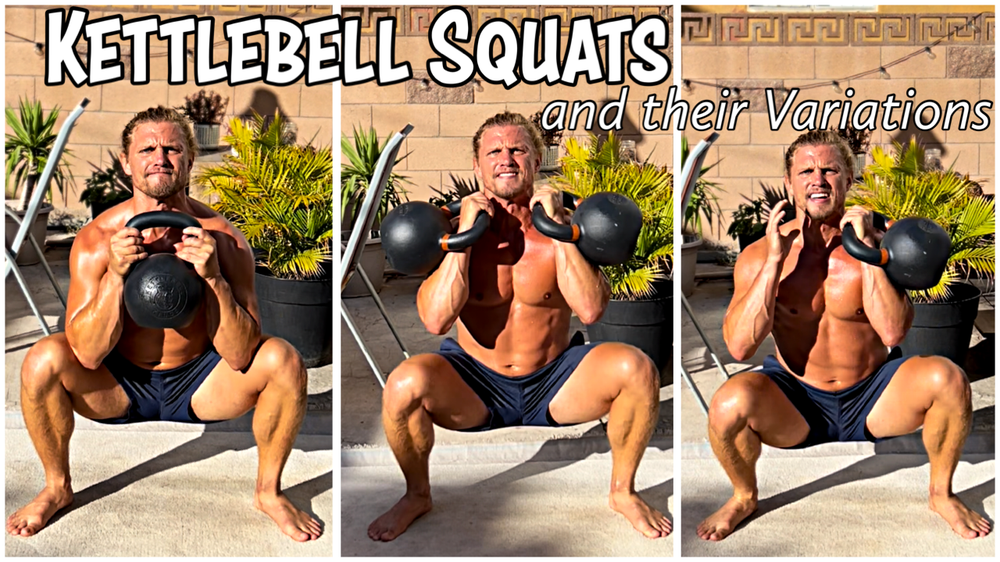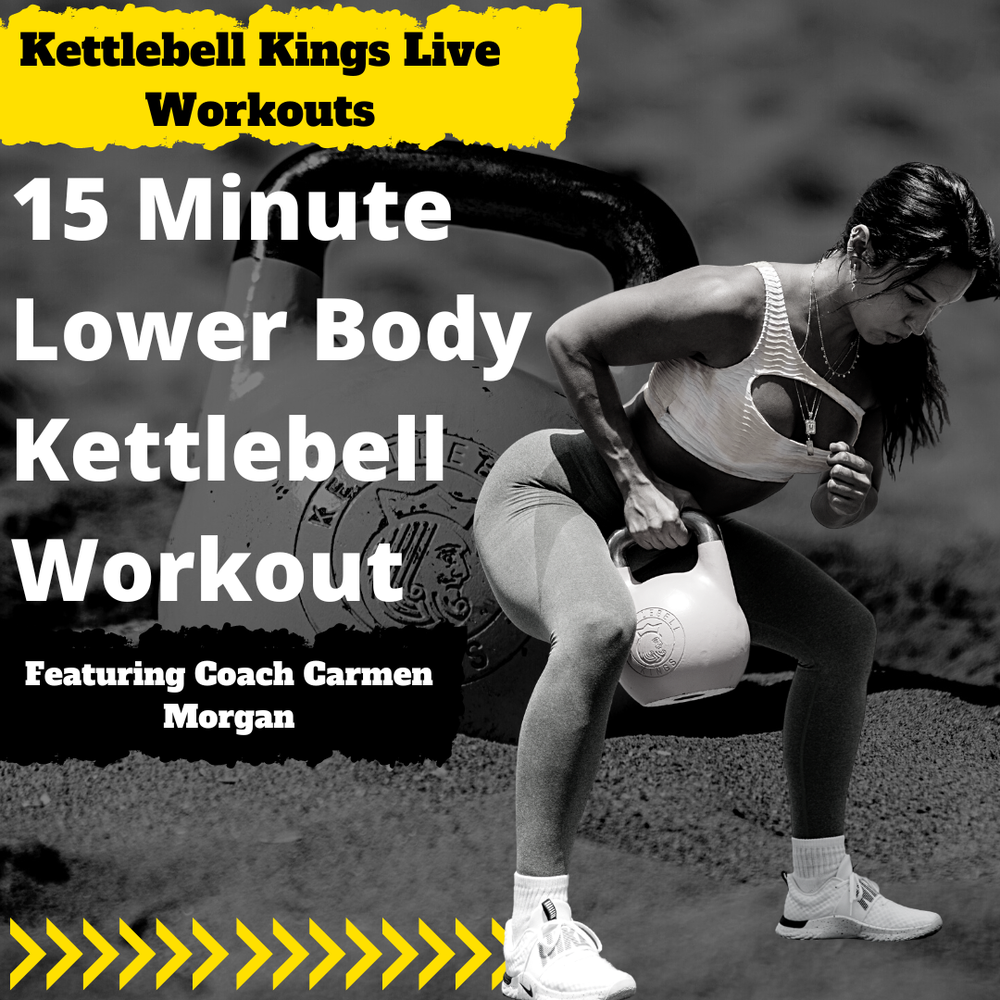Two of the most common words associated with kettlebells are: Versatile and Minimalistic. Both of which sum up the Kettlebell Kings 40lb kettlebell (aka the 18 kilogram kb), which tends to be an overlooked size within the world of kettlebells. The purpose of this article is to break down the Kettlebell Kings 40lb kettlebell and answer two questions:
Who is it for?
What are its uses?
In addition to answering these two questions. I share my “Go-To Lower Body Warmup” that I use almost every day with Kettlebell Kings 40lber. And as a BONUS I'm also sharing 2 of my favorite Single Kettlebell Core Movements!
So let's go!
The Kettlebell Kings 40lb Kettlebell : Who is it for?
Who is the 40lb kettlebell for? Easy answer, because I believe it's for everyone! Whether you are new to kettlebells, have been practicing with them for a few years, or if you're a kettlebell coach. This underrated size KB can sneakily be used by more people than you might think . So throughout this article I will breakdown how I personally practice with the 40lb kettlebell, but will also showcase how my students utilize it. Especially my beginners, where I break down the foundational move that every person, who is just starting out, MUST learn!
The Foundational Move
Dan John, "The Godfather of Kettlebells" puts it best in describing the kettlebell swing. He says, "when performing the kettlebell swing correctly it is a fat burning athlete builder, but when performing it incorrectly, it's like getting into a car accident.." A little aggressive, I know. But, it drives home the importance of learning the proper technique of the swing before rushing into it.
One of the most common mistakes that I see with the kettlebell swing are people's… Hinge! Or lack thereof. Now there are a number of ways to help fix the hinge movement pattern . But, I have found that the most influential exercise that has helped me and I'm sure thousands of other kettlebell enthusiasts out there is The Kettlebell Dead .
The Kettlebell Dead
The kettlebell dead is my bread and butter when teaching new students how to hinge properly and the 40lb (18k) kettlebell is my go-to tool of choice for it. The dead is a solid foundational move because it is a controlled exercise that mimics the hinge pattern found in the kettlebell swing . In a way, you can imagine it as a kettlebell swing with no arms, because the angles that you're creating are essentially the same as those within the swing. I also like using the 40lber because it's enough weight to force you to engage the proper muscles needed to perform the exercise correctly. When learning the dead with this size kettlebell, it also teaches you how to respect the bell when picking it up and putting it down . Which is a very overlooked, yet extremely important facet of kettlebell training. So without further ado here are my play by play steps of how to perform the kettlebell dead.
- Stand Over The Bell. Have it lined up with the midsection of your slightly wider than shoulder width feet.
- With the pinky sides of your hands Karate Chop your hips back. Imagine a wall 2ft (60cm) behind you and you're reaching your butt towards it.
- Check The Angles! You want the following: Nearly vertical shins. Neutral spine with eyes on the horizon. Knees slightly lower than your hips. Hips slightly lower than your shoulders. Imagine a greater than symbol >
- Grip it and Rip it! With 2 hands grab the middle part of the kettlebell handle, wrap your thumbs around, take a quick inhale and try to snap the handle in half. Simultaneously rotate your biceps forward. When the handles are on the verge of snapping, corkscrew your feet into the ground outwards. Imagine two walls closing in on the outside of both your knees and you're pressing those knees outwards resisting the walls from closing your knees together. (Practice holding this position for 30sec: If done correctly, your lats and legs will be on fire! This step of the dead is one part that protects the lower back and makes the bell feel much “lighter”).
- standing tall exhale
- Once at the top. Flex your glutes, core, and quads. All of which will also help protect your back. Slowly return the kettlebell, the exact opposite direction, to the starting position. Repeat these steps until you are The Kettlebell Dead Master!
The Kettlebell Kings 40lb Kettlebell: What are its uses?
progressive overload
One of the most important things to focus on when it comes to building strength is progressive overload. Progressive overload is a strength training principle where you focus on gradually increasing stress onto the body to reach an adaptation. Now there are a number of different versions of progressive overload. Here are a few of them.
Volume: The number of sets and reps you perform of a certain exercise or the number of times you are training per week.
Rest Intervals: The variation of time you take to recover between sets. This one is more or less associated with building cardio.
Choice: In StrongFirst we call this Specialized Variety. Which means you'll choose an exercise that is “the same but different” from one workout to the next. For example, when working your "Hinge" movement, one day you might perform 2 Handed Swings then the next day you perform Single Arm Swings.
BUT...
The most prominent version of progressive overload used to build strength is Intensity, which refers to weight. In this case, the size of the kettlebell. This is important to note because when it comes to truly building strength, we must increase weight. How do we do that? progressively . And one specific type of kettlebell that helps with this process dramatically, is called the “Tweener” bell!
The "Tweener" Bell
Kettlebells are generally measured in kilograms and increase every 4 kilograms (8.8lb). These KBs are considered your “Staple” sized bells.
8k, 12k, 16k, 20k, 24k and so on.
However, there are a number of kettlebells that fall in between these staple sizes. These in BETWEEN bells are called “Tweener” bells.
10k, 14k, 18k, 22k, 26k and so on
Tweener bells are a great addition to have in your kettlebell garden because they help bridge the gap between the staple sized bells, but more importantly combat intimidation when going up in weight.
Whether you're a beginner or have been practicing with kettlebells for years, jumping 4-8kilos (8.8lb-17.6lb) from one bell to the next in any movement can cause some hesitation. As a coach, we might not see much of a difference between a 16k (35lb) and a 20k (44lb) sitting next to one another, but I promise you some of your students will.
I have a student who we started to call “JB Blues”. JB= her initials and Blues= the color of the tape on the handle of the set of 12k (26lb) kettlebells. She was coined this nickname because she would never move up from the 12k (26lb) size kettlbell, regardless of how spotless her form was on all of her movements. She lacked trust in herself and the strength building process. "Nope, no shot." was her go-to response on countless occasions when I would tell her to grab the 16k (35lb). Her resistance was quite confusing to me, because when she started training with me at my gym she said she wanted to get stronger. And as previously discussed, the best way to get stronger is to increase weight over time.
So, what did we do? Enter the first “Tweener” bell of the collection. The 14k (30lb) kettlebell from Kettlebell Kings. Not too big to cause hesitation, but big enough to stay the course of progressive overload. This bell set the tone for JB and helped her to move forward and upward to the 16k (35lb). Confidence was brewing…
A few weeks of training had passed, but there we were again. The same song and dance. Except this time she was mentally stuck at the 16k (35lb)...
Enter the second “Tweener” bell of the collection. Yup, you guessed it. The Kettlebell Kings 40lber! (18k). It worked better than the 14k! Not only did it bridge the gap to the next size kettlebell, but she finally started to trust herself that she was capable of moving real weight!
Today, she goes by a new nickname: “JB Greens”. Which represents the color of tape on the set of 24k (53lb) kettlebells, because that's her go-to bell for swings and squats now! While also cleaning and snatching the 20k (44lb) like it's nobody's business! She's easily one of my strongest and most skilled students and struts with a different kind of step. A very confident one.
The reason for this story is to showcase the importance of three things.
- In order to get stronger you have to increase weight progressively.
- In order to trust the process you must first trust yourself.
- ”Tweener” bells, like the Kettlebell Kings 40lber can have an incredible effect in your kettlebell training. They give you the opportunity to build strength on a smaller scale and combat the intimidation factor one may have when moving up in kettlebell sizes.
Lower body warm-up
Another beautiful facet of the kettlebell is that it can be utilized as a tool for priming the muscles. This is another reason why kettlebells have been called “The Swiss Army Knife” of fitness equipment. Versatile to max! That said, it's important to use a kettlebell in your warm-ups as much as possible. Ideally you want to choose a size bell that's not too heavy, but also not too light. The Kettlebell Kings 40lber is the perfect warm up bell for myself because it checks both those boxes.
Training Notes: The following lower body warm up is in the form of a kettlebell complex. Focus on your breath throughout each movement. Control > Speed.
Rounds: 3-5
Reps: 3x of each move
- Deads: See “The Kettlebell Dead” steps from earlier in the article.
- Goblet Cleans (aka 2-Handed Dead Cleans):
- Follow the first 4 steps of the dead
- Aggressively stand tall while simultaneously floating the bell up into a Goblet Grip (Pinky, Ring, Middle finger wrapped into the window of the handle. Thumb pressing inside of handle. Index finger pressing up the side of handle)
- Slowly guide hips back and bell down to starting position. Repeat.
- Reverse lunge + knee drive (3 reps each leg):
- Maintaining a Goblet Grip, lock your eyes to a point on the ground for balance.
- Slowly step one leg back into a low lunge, keeping a 90 degree angle with the front leg.
- Gently tap the back knee to the deck then drive that same knee upward into a high march position.
- Alternate legs or finish reps on this side before moving to the next, your choice.
- Goblet Squats:
- Maintain Goblet Grip
- Adjust feet just outside of shoulder width having knees track toes in a slightly open stance.
- Slowly lower down into a squat while actively gripping ground with your toes and pressing your knees outwards.
- Slightly pause below 90 degrees then drive your feet through the ground and stand tall with intention.
- Prying Sumo Squat*:
- With the same Goblet Grip, slowly lower to the bottom of your squat.
- Place elbows on the inside part of your knees and “pry” those knees apart.
- Think of crushing the kettlebell while shifting your weight side to side for 30-45sec.
*Ideally you want to have a straight spine and heels connected to the ground. If you're having trouble with these two positions then replace the kettlebell with a doorway, TRX straps, or the post of a squat rack. Simply grab a hold of said object and lower yourself down into the sumo squat position, reach the crown of your skull to the ceiling and lean back into your heels, while shifting your weight side to side with a neutral spine.
Side Note: If you'd like to turn this kettlebell warmup into an actual training session, you can do so in one of two ways.
Increase Intensity (weight): Use a kettlebell at least 6k heavier than your warmup bell
Or...
Increase Volume (number of reps/sets): Perform 10-12 rounds instead of 3-5 (If you want more reps. Do more sets!)
BONUS: Two of My Favorite Core Exercises!
There might literally be over 1,000,000 different core exercises out there. That said, here are two more! These advanced core moves are my go-to with the Kettlebell Kings 40lber! They will target your lower abs, obliques, shoulders, and will test your grip strength.
Training Notes: You can follow the rounds and time scheme I have below or just toss these movements into your own core routines!
Rounds: 4-6
Time: 40 sec On 20 sec Off of each move
- Pull Thru Elevators: Obliques and Shoulders
- Get into an Elevated Table Top Position aka Beast Position with the kettlebell just beside you on the Left side.
- Reach your right hand across your body, grab the handle of the kettlebell, and pull thru to the other side.
- Repeat going the opposite direction with the opposite hand.
- Next, while still hovering your knees off the ground, lift up your left foot, then drive the left knee to the left wrist. Once the knee is attached to the wrist, drag the knee up towards the tricep. Proceed to lower the knee back down to the wrist and step back into the starting Beast Position. Repeat the same steps on the right side.
Quick Tip: Picture having a cup of coffee on your back while performing the pull thru portion of the movement.
- Kettlebell “Tosses”: Lower Abs, Shoulders, and Grip Strength (I recommend using chalk to ensure a solid grip of the bell)
- Take a seat beside your bell and pick it up in a 2-handed bottom's up grip position.
- Having the bell on your waist, roll onto your back and lift your feet straight up towards the sky. (Imagine your legs up a wall).
- From here you will bend your elbows to 90 degrees, slowly tap the bottom of the bell on the ground above your head, then in one motion drive the bell and extend your arms and shoulders up towards your feet. (There is no actual tossing of the bell!).
Quick Tip: Focus on pressing your lower back into the ground and brace your core when the bell is gently tapping the ground above your head.
Let's wrap it up
In summary, whether you've just started your kettlebell journey or you've been practicing with them for years, you can find value in the Kettlebell Kings 40lber. As stated above, this particular size bell has helped me create a strong foundation for my beginner students. It's a bell that I use on a daily basis between my warm-ups and favorite core routines. But, most importantly the Kettlebell Kings 40lber works as a “Tweener” bell which helps bridge the gap and fight intimidation to those working on building strength and confidence within their own practice. Because, at the end of the day, we don't want to be a “JB Blue” we want to be a “JB Green”!
Kettlebell Kings has the most highly & frequently reviewed kettlebells in the world. We have free shipping in the US & Canada ( www.kettlebellkings.com ), Europe ( www.kettlebellkings.eu ) and Australia ( www.kettlebellkings.com.au ). Check out our 4,000 reviews for quality and customer service here!
